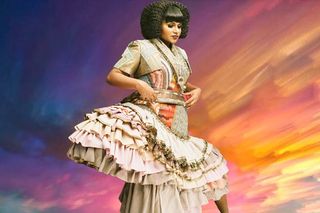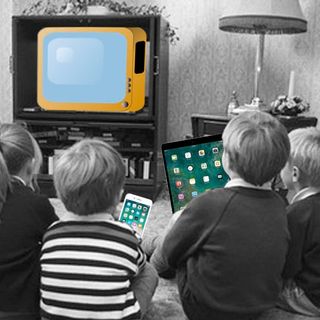
What Makes Kids’ Movies ‘Good’?
Adult sensibilities may not be the best arbiter of kids’ movies.

Earlier this month, the widely anticipated movie adaptation of the children’s book A Wrinkle in Time was released. While the movie received mixed reviews, there seemed to be more negative than positive ones.
Variety Magazine wrote: “A Wrinkle in Time is wildly uneven, weirdly suspenseless and tonally all over the place, relying on wall-to-wall music to supply the missing emotional connection and trowel over huge plot holes.”
The Critic Consensus from Rotten Tomatoes wrote: “A Wrinkle in Time is visually gorgeous, big-hearted, and occasionally quite moving; unfortunately, it’s also wildly ambitious to a fault, and often less than the sum of its classic parts.”
But a children’s librarian is challenging this school of thought. Jenny Christine posted a thread of tweets in response, asserting that adults aren’t the best judges of the merit of children’s movies.
She starts by suggesting critics are evaluating A Wrinkle in Time and in fact all children’s movies with the wrong yardstick.
We have a language for talking about children's literature. And we have a language for talking about movies.
This is, of course, because we almost never treat children's movies as art. (Which then means that few children's movies are stellar examples of art. And so on.)
She suggests the problem is rooted in the fact that most kids’ film makers and reviewers know little about child development. (By contrast, children’s literature, as an industry she says, is very attuned to children’s development and abilities — and consequently is acknowledged for its artistry.)
Which means movie critics view and judge children’s films from the point of view of an adult. She gives the example of Hugo, a kids’ movie (based on a kids’ book) that has a 94% rating on Rotten Tomatoes. The movie might hit all the ‘great movie’ sweet spots for an adult watching the film, she says, but its interpretation and evaluation ignored the very aspects of the story that made it challenging and worthy for children.
The book has interesting and important things to say about artistic mediums, and what we understand to be the limits of what they can convey, and what it means to break past those limits, even if the world isn't able to keep up.
The movie, by comparison, is safe
To Christine, A Wrinkle in Time, when viewed from a child development perspective, holds up as a valuable piece of art that challenges and pushes boundaries, leaving its youthful viewers moved by and thinking about what they have seen.
Interestingly, Christine’s point of view has some backing by the ratings that came in from CinemaScore, a company that calculates movies ratings by polling regionally and statistically. According to a report by Deadline, A Wrinkle in Time received an overall CinemaScore rating of B. However, viewers below the age of 18 rated the movie A-.
The result is, Christine concludes, “… [O]ur conversation about visual media for children will be woefully inadequate until we really begin to understand, for example, the interaction of pacing and children’s cognitive processing and until we start listening to children more, and arm children with better language for articulating their thoughts about visual, moving movies.”
Until then, what could be a productive conversation around what children take away from movies will be mired in counting screen time — an important, but incomplete part of children’s development as well as the movies they watch.
Overwhelmingly, the conversation is that the only useful conversation about "screen time' is that children should have as little of it as possible.
Which means that we fail to talk about what children of various ages _need_ from visual, moving media – in terms of both art and development.
Angelina Shah is a staff writer with The Swaddle. In her previous life she was a copywriter in advertising. She has a penchant for reading, singing, travelling and being obsessed with superheroes.
Related


Katy Perry Misses the Memo on That Whole Consent Thing
